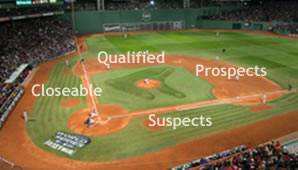There are few sales trainers that I have read that get to the point better than Dave Kurlan. He's written two articles on the two biggest mistakes salespeople make.
I'm sharing them with you because I've committed these mistakes myself over the years and I know you have too.
Here is his article about the first mistake.
Thank you!
Ev
"A Heck of A Nice Guy"
Ask 10 people and you'll get 10 different answers about the biggest mistake that salespeople make. Ask the question a bit differently and I will give you a different answer too. But ask the question in the title - "What is the single biggest mistake that salespeople make?", with the key word being mistake - something they do incorrectly rather than due to a weakness - and I can provide data to back it up. There are actually 3 mistakes that are nearly always made but 2 of them happen as a result of the single biggest mistake.
Objective Management Group has conducted nearly 9000 sales force evaluations and more than 550,000 sales assessments. The data clearly shows that in 84% of the cases, salespeople make inappropriately timed presentations. What does that mean?
These days, the typical point of entry for a salesperson is AFTER a prospect determines an interest in purchasing a product or service. They think they know what they want and THEN the salespeople get involved. Prospects ask for a presentation of capabilities, and salespeople present their value proposition. Prospects ask for pricing and salespeople create a proposal. Then the salespeople begin to follow up, but the prospects have already disappeared and mistake #2 occurs - inappropriately timed follow up.
Let's use my Baseline Selling model to illustrate why the presenting taking place in the scenario above is inappropriately timed.

In the baseball diamond above, capabilities, value propositions, and presentations take place between third base and home plate. Yet, when a salesperson gets an audience with a prospect the salesperson is has just reached first base. It's inappropriate to run directly from first base to third base without touching second base on the way! But that's what 84% of all salespeople skip the valuable criteria that sits between first and second base, as well as between second and third base.
A salesperson representing the industry leader or the low-price leader might get the business by being in the right place at the right time, but it's nearly impossible for everyone else to succeed in these scenarios. It is very difficult to sell without uncovering a prospect's compelling reasons to buy (spend money) and buy from you instead of your competitors. That is just one of many criteria that must occur between first and second base. It's nearly impossible to sell without learning how much money the prospect will spend and that is just one of many criteria that must be identified between second base and third base. When a salesperson isn't aware of those two important slices of information, it isn't possible to differentiate (think decommoditize) your company from the pack nor can you present both a needs and cost appropriate solution!
What can you do about this problem?
No comments:
Post a Comment
Note: Only a member of this blog may post a comment.